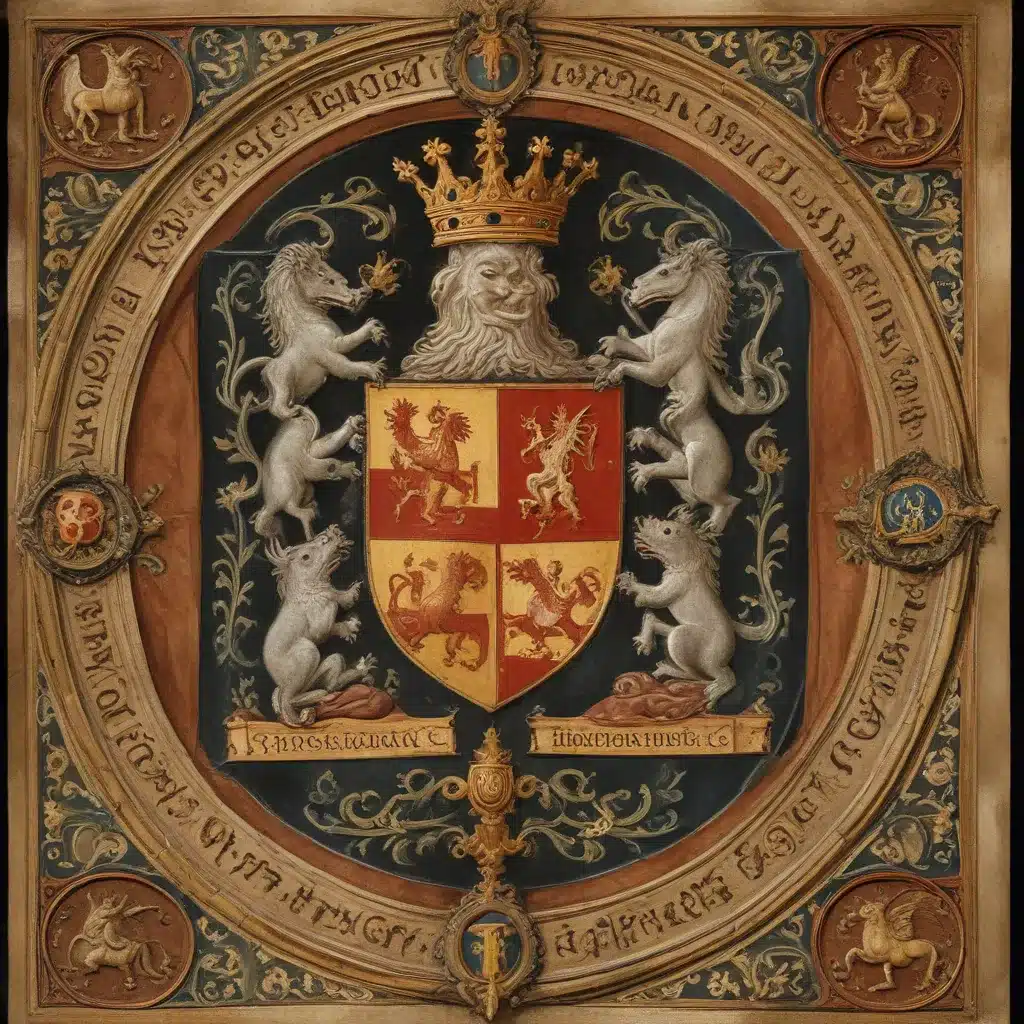
For centuries, the ornate coats of arms and heraldic devices that adorned the banners, shields, and seals of noble families and institutions have captivated the imaginations of artists, historians, and the general public alike. These visual symbols, rooted in the traditions of medieval Europe, carry a rich tapestry of meanings that extend far beyond mere decorative elements. They are, in essence, a symbolic language—one that, when properly decoded, offers a window into the complex social, cultural, and political dynamics of the past.
Foundations of Heraldic Symbolism
The development of heraldry, the systematic study and practice of these emblematic devices, emerged as a practical necessity during the chaotic era of medieval warfare. As knights and soldiers clashed on the battlefield, their personal insignia painted on shields and banners became a crucial means of identification, allowing allies to rally under their designated standards. Over time, these heraldic emblems evolved from simple functional markers into elaborate visual representations imbued with deep symbolic significance.
Each component of a coat of arms, from the tinctures (colors and metals) to the charges (the symbols and figures depicted), was carefully chosen to convey the identity, history, and values of the bearer. The iconography of heraldic art drew upon a rich tapestry of symbolism, borrowing from mythological creatures, religious imagery, and representations of natural phenomena, all of which carried distinct cultural and social meanings.
Decoding the Heraldic Lexicon
At the heart of heraldic symbolism lies the strategic use of color. In the language of heraldry, tinctures were not merely aesthetic choices but rather imbued with profound symbolic meaning. The brilliant red of a gules field might signify courage, while the deep blue of an azure background could evoke loyalty and truth. Precious metals like gold (or) and silver (argent) were often used to convey wealth, purity, and divine favor.
Beyond the palette, the specific charges and figures that adorn a coat of arms hold equally significant symbolic weight. A majestic lion, for instance, could represent strength, leadership, and nobility, while a graceful swan might symbolize beauty, grace, and purity. The combination and arrangement of these elements further amplified the heraldic meaning, creating a visually captivating and conceptually rich tapestry of symbolism.
Contextualizing Heraldic Imagery
The symbolic language of heraldry was not developed in a vacuum but rather reflected the historical, cultural, and social contexts in which it flourished. The rise of chivalric ideals, the influence of religious iconography, and the shifting power dynamics of the medieval world all left indelible marks on the evolution of heraldic design.
For example, the prominence of the eagle, a symbol of power and divine right, within the coats of arms of Holy Roman Emperors and other European rulers, underscored the divine legitimacy of their rule. Conversely, the prevalence of fleurs-de-lis in the heraldry of the French monarchy evoked associations with purity, fertility, and the divine right of kings.
Interpreting the Heraldic Landscape
Heraldic art also played a crucial role in the social stratification and political power structures of medieval Europe. The display of coats of arms on seals, banners, and architectural elements served to visually demarcate the social status and lineage of noble families, reinforcing their claim to privilege and authority. Conversely, the denial or usurpation of heraldic rights could be seen as a direct challenge to one’s social standing and political influence.
The careful regulation and codification of heraldic practices by the emerging class of heralds and kings of arms further cemented the role of these visual symbols in the maintenance of social and political hierarchies. The ability to decipher and interpret the complex language of heraldry became a mark of erudition and a tool of power in its own right.
Heraldry as a Window to the Past
The study of heraldic art and its associated symbolism has proven to be an invaluable resource for historians and cultural scholars. Heraldic artifacts, from illuminated manuscripts to carved architectural elements, have provided a wealth of information about the lineages, alliances, and significant events that shaped the medieval world.
By deciphering the hidden meanings within these visual codes, researchers can uncover a deeper understanding of the social, political, and cultural dynamics that defined the era. The preservation and study of heraldic heritage has become an integral part of the broader field of cultural heritage preservation, ensuring that these visual narratives of the past continue to inform and enrich our understanding of the human experience.
The Legacy of Heraldic Symbolism
The influence of heraldic symbolism extends far beyond the confines of medieval history. In the modern era, the visual language of heraldry continues to be employed in a variety of contexts, from the official seals and emblems of nations, cities, and institutions to the personal crests and devices used by individuals and organizations.
Even in the realm of popular culture, the enduring appeal of heraldic imagery can be seen in its widespread use in fantasy literature, role-playing games, and various forms of artistic expression. This persistent fascination with the visual lexicon of heraldry speaks to its timeless ability to capture the human desire for identity, lineage, and the representation of values and aspirations.
As we continue to unravel the complex symbolism and rich historical significance of heraldic art, we gain a deeper appreciation for the power of visual language to shape and reflect the social, cultural, and political narratives of the past. By preserving and studying these captivating visual artifacts, we not only honor the legacy of medieval heraldic traditions but also unlock new avenues for understanding the human experience across the ages.